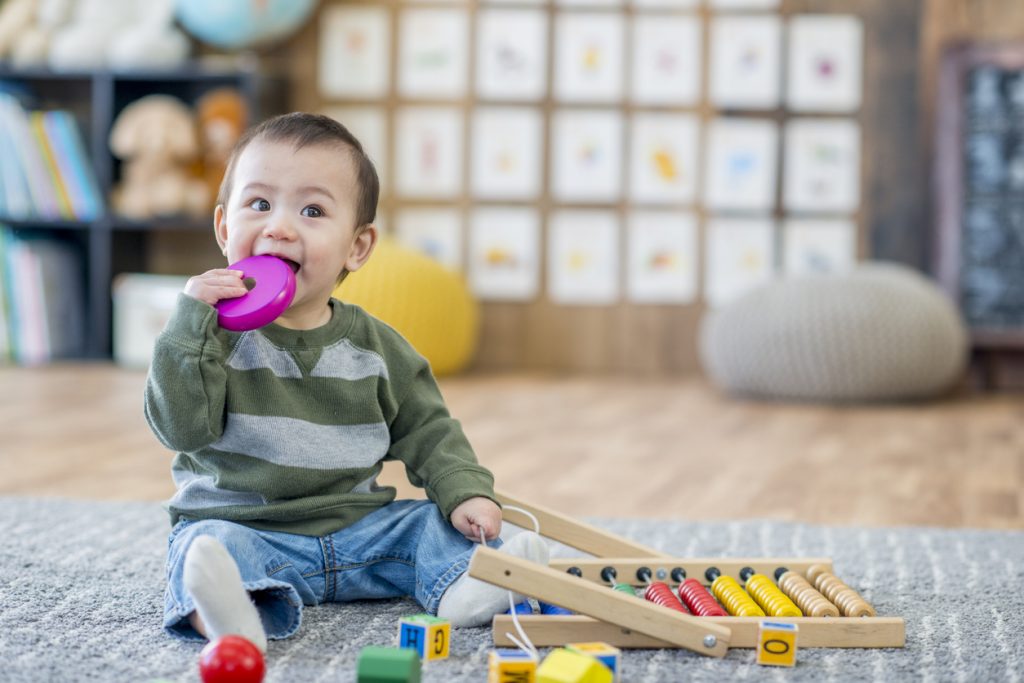Learning Through Play: Ages and Stages

When it comes to toys, how do you choose the right ones for your baby? What are the key components you should be considering? Childhood development expert, Dr. Deborah Weber shares some key points.
Q. When toys are labelled with ages, are the labels for safety, or are they based on research on developmental stages?
A. Age recommendations are guidelines for parents and gift-givers to use when purchasing toys for children. The age recommendations on Fisher-Price toys are based on the following factors: safety guidelines, sound knowledge of the developmental stages of children, observations of children interacting with toys, input from parents of young children regarding the age-appropriateness of toys and history of similar toys. So you can see that much consideration, deliberation and testing goes into establishing the age recommendation for toys. In addition to following the age recommendations for toys, parents need to instruct older children to keep their toys out of reach when younger children are around, as there could be small parts that could cause a choking hazard.
Q. My friend’s baby seems to be learning/developing quicker than mine. Should I be worried? Does this mean my baby is less intelligent?
A. Children develop at different rates and go through developmental stages at a different pace. The best way for babies to learn is through their interactions with you. Talk, read, and sing to them throughout the day—use descriptive language because that provides the foundation for learning. In addition, there are many toys on the market which have learning components integrated into them for a child your baby’s age.
Q. How can I encourage my baby to use their imagination?
A. The Laugh ‘n Learn toys provide a great opportunity for babies to use their imagination. They are early role-playing toys with themes to introduce babies to pretend play in a fun and familiar way—some examples are a Tool Bench, Farm, Kitchen, Tea Set, Vacuum and Lawn Mower—these toys jump start baby’s way to imaginative play. Engage in play right alongside your baby—it’s a great way to get them engaged and encourage them to use their imagination—“What can we build today? Would you like a cup of tea? This room is messy—we sure do need to vacuum—let’s do it!”
Q. What type of stimuli should I be exposing my baby to and at what stages? When are colours most important? Sounds? Touch?
A. The youngest babies are sensory learners, so exposing them to a variety of sounds, sights, and textures is appropriate. Playful music as well as soothing music of different styles, bright colourful high-contrasting toys or objects, and texture that is smooth, bumpy, silky, furry, or soft. Describe the sounds, sights, and textures to your baby as they interact and experience them. Introducing the older baby to colours provides them with an understanding of the colour names and the fact that objects are made of different colours. It gives them the language to use to help describe objects.
Q. Can a child have too many toys?
A. A child can have too many toys if there is no place to store them properly. Clutter and disorder can be overwhelming and cause frustration making it difficult to play appropriately. Keeping toys in order on shelves or in containers is important so that when it is time to play, the toys will be ready, and when it is time to clean-up, there will be a place to put the toys away. When a child outgrows a toy, it can be an emotional parting for the child. If your child is old enough to understand, involve him or her in the decision about what to do with the toy. You’ll have an indication of when it is time to part with the toy, to save it for another child, or to give to charity when your child no longer uses it for several months.













